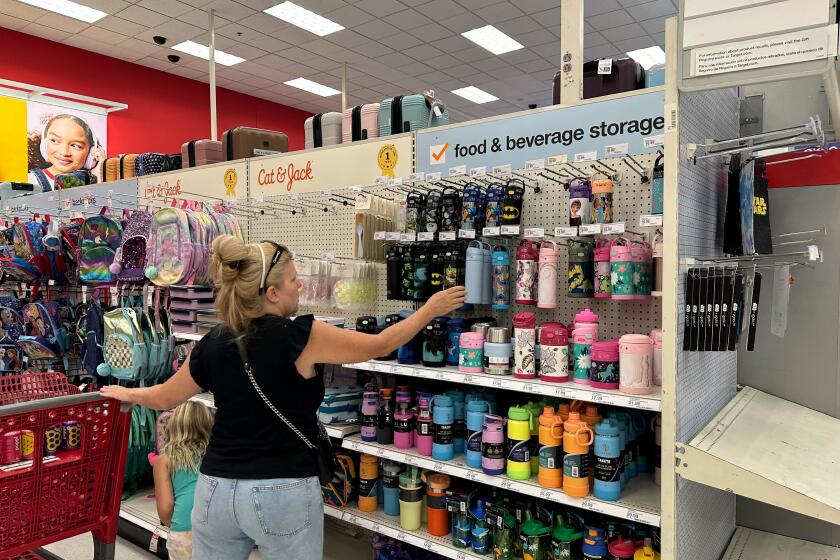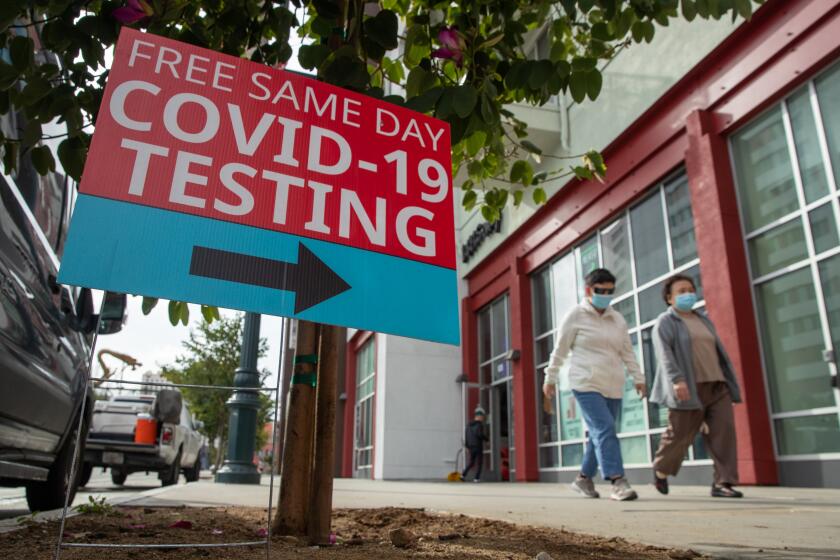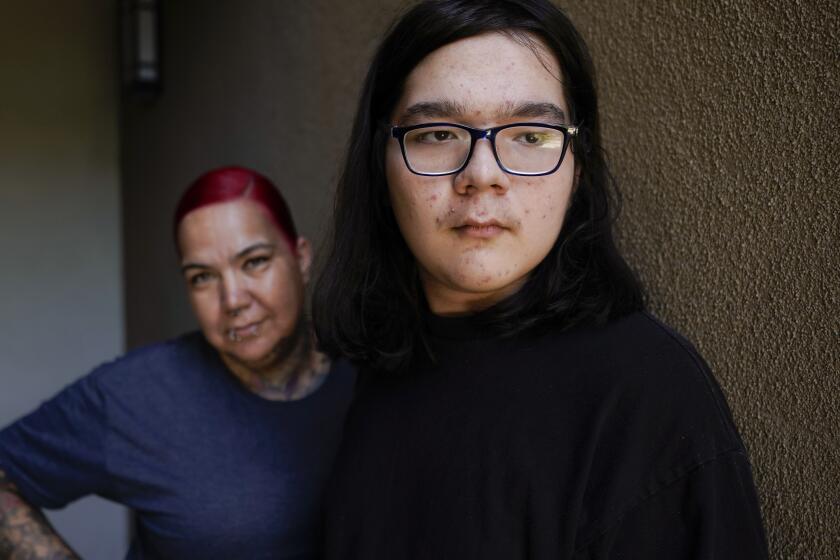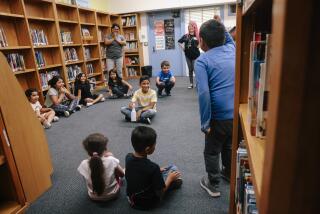Need help with school supplies? Here’s where to find free ones
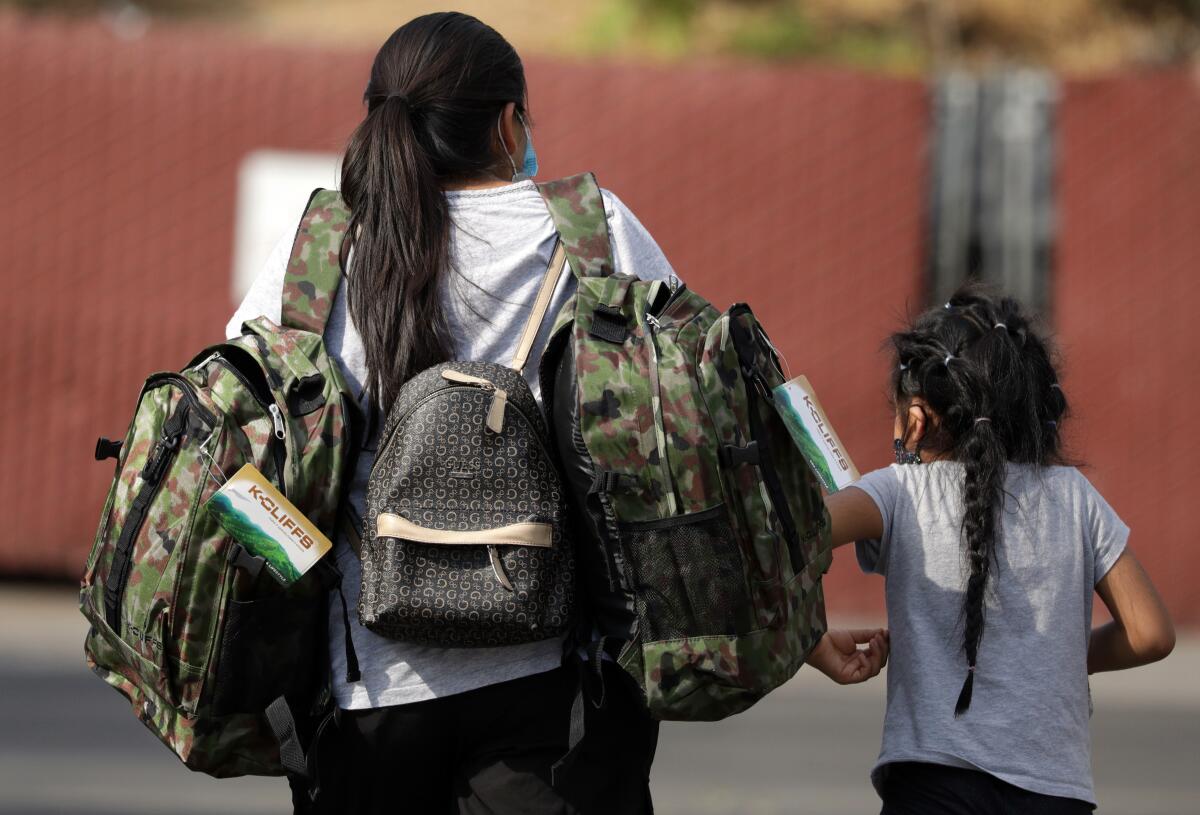
The school supply sections at retailers such as Target, Walmart and Ralphs will undoubtedly be inundated this weekend with parents and kids trying to fill last-minute needs.
For many students across L.A. County, mid- to late August is the start of the new school year. And while some families have been hunting down school supply deals, others might not have enough to buy all the basic materials that schools don’t provide.
This year back-to-school spending for K-12 students is expected to total $41.5 billion, up from $36.9 billion in 2022 and the previous high of $37.1 billion in 2021, according to a survey by the National Retail Federation and Prosper Insights & Analytics.
As back-to-school shopping is forecast to reach a record $41.5 billion this year, parents and teachers in L.A. debate what’s essential on their lists — and get creative to make ends meet.
Families with children in elementary through high school plan to spend an average of $890 on back-to-school items this year, the survey found.
Parents want their children to have the tools to succeed in the classroom, but in some cases they’re having to choose between paying for necessities such as food and purchasing these supplies, said Jennifer Kottke, homeless education program coordinator for the Los Angeles County Office of Education.
When a child is sent to school, their teacher may be able to provide them a pencil, pen, paper and, potentially, a box of crayons in the classroom.
But that depends on the school district’s budget — and the teacher’s, Kottke said.
“There are some really dedicated teachers who spend hundreds and hundreds of dollars from their own pocket to really take care of their students,” she said.
That’s not always the case, as some teachers struggle to make ends meet. “To go out and purchase a ton of stuff for students outside of what the school district provides can be difficult for them,” Kottke said.
“There’s a lot of variables when it comes to the necessary ‘average’ thing that a student going to the school gets,” she said.
Students in middle and high school also have varying needs from class to class. While primary school students typically stay in one classroom, middle and high schoolers have multiple classrooms with teachers who have different supply expectations.
The California Education Code says that a student enrolled in public school shall not be required to pay to participate in an educational activity. That prohibition extends to the purchase of school supplies.
All school supplies should be provided to pupils free of charge, according to an analysis of the education code by Kathleen Fay, family engagement commission consultant for the California State PTA.
But providing students with basic materials can’t always be done because of a district’s budget.
Here are ways that families can get school supplies for free ahead of or during the school year.
Updated versions and new vaccines for COVID-19, influenza and respiratory syncytial virus will be rolled out this fall.
Free school supply resources
There are a number of local organizations in Southern California that provide free school supplies to families in need, including nonprofits, mental health clinics, churches, city programs, clubs (Kiwanis, Lions or Rotary clubs) and your child’s school.
But you may have to look around a bit to find them, because only some of these groups have this type of program. And others may have a limited amount of supplies in stock. Call or visit the front desk of these entities to get the conversation started — often they’ll be able to point you in the direction of a program that can help if they can’t assist you themselves.
In the months leading up to the start of the school year, many communities have back-to-school events that provide residents with backpacks filled with the basics.
For example, two of these events are taking place in Carson and San Pedro on Aug. 12.
- Carson Mayor Lula Davis-Holmes and Councilmember Cedric Hicks are hosting the 6th Annual Back-to-School Backpack Giveaway at the Center Court of the SouthBay Pavilion Mall, 20700 Avalon Blvd., starting at 2 p.m. City officials will hand out 500 backpacks on a first-come, first-served basis, offering essential school supplies to all eligible children who attend. To be eligible, families must live in Carson, so bring your ID to verify your address.
- The Harbor Community Health Centers are hosting a Back to School Fair from 10 a.m. to 1 p.m. at the San Pedro location — 425 S. Pacific Ave. The organization will be giving out free backpacks and school supplies; children must be accompanied by an adult to receive a backpack. The event will also have entertainment, games and free goodies from community nonprofits.
Larger nonprofits are also good sources of free supplies. For example, Wellnest, a Los Angeles-based mental health clinic, has a school supply assistance program that isn’t limited to its clients. Call the front desk at (323) 373-2400 and you’ll be put in touch with the Family Resource Center. From there a staff member will assist you in getting the school supplies you need for free.
Another nonprofit, the Salvation Army, hosts back-to-school drives for families regardless of financial circumstances. Funded by community donations, the program provides families with assistance at its partner locations, said Katina Fields, director of media and public relations for the Salvation Army‘s Southern California division.
The organization‘s website lists its program partners by ZIP Code — there are locations in Los Angeles, Torrance, Redondo Beach, Inglewood, Glendale, Van Nuys, Santa Fe Springs, Pasadena and Compton.
California had among the highest increases in chronic absenteeism in the country, about 1 million additional students were chronically absent when compared with the year before the pandemic.
Another organization funded by donations to support children’s basic needs is the Assistance League of Los Angeles. It has five programs that help homeless, foster and/or impoverished children and young adults by providing them with necessities.
Its program Operation School Bell provides K-5 students with one pair of sneakers, two tops, five pairs of socks, underwear, a backpack, school supplies, a hygiene kit, a hoodie, one or two books and a toy.
This past year, the Operation School Bell items were worth $195 per student, said Melanie Merians, chief executive of the regional nonprofit.
The program has no way to identify the youths who need its help, so Merians said the Assistance League works with Los Angeles Unified School District teachers, counselors, school nurses and principals, who identify and schedule the children for the program. The items can be delivered at the school or at the league’s Hollywood office.
To be eligible for the program, LAUSD must determine that the child is experiencing homelessness, is in foster care or is in a very low income household.
The Assistance League also partners with the Los Angeles County Department of Children and Family Services to provide children clothing through its Foster Children’s Resource Center in Northridge.
If a student is experiencing homelessness, Kottke said, the L.A. County Office of Education has liaisons who help students and their families identify what they need, such as help with necessary school supplies. For more information about the liaisons, check out the Office of Education website or call (562) 922-6247.
About The Times Utility Journalism Team
This article is from The Times’ Utility Journalism Team. Our mission is to be essential to the lives of Southern Californians by publishing information that solves problems, answers questions and helps with decision making. We serve audiences in and around Los Angeles — including current Times subscribers and diverse communities that haven’t historically had their needs met by our coverage.
How can we be useful to you and your community? Email utility (at) latimes.com or one of our journalists: Jon Healey, Ada Tseng, Jessica Roy and Karen Garcia.
More to Read
Sign up for Essential California
The most important California stories and recommendations in your inbox every morning.
You may occasionally receive promotional content from the Los Angeles Times.
